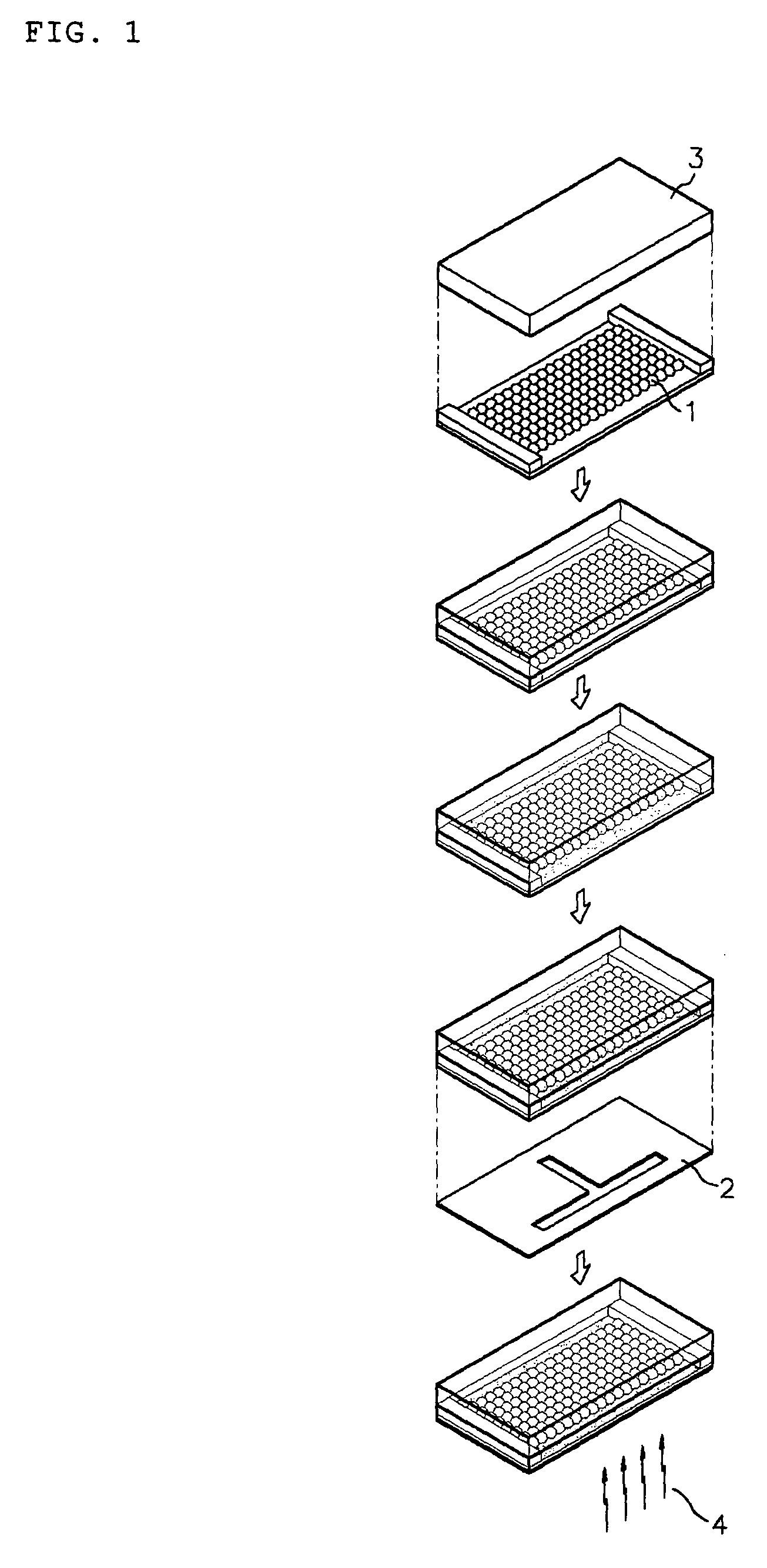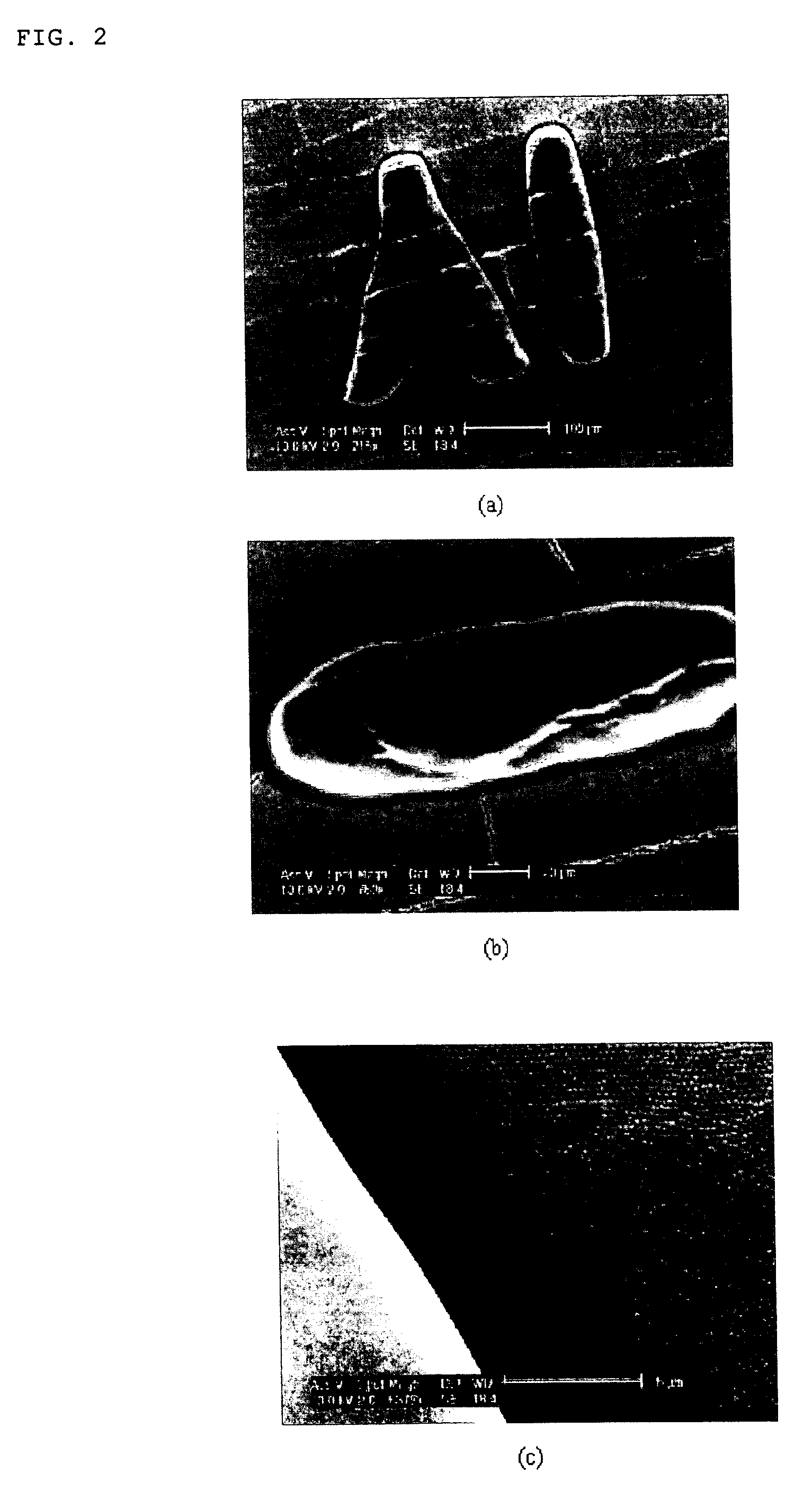Method of preparing patterned colloidal crystals
a colloidal crystal and patterned technology, applied in the field of colloidal crystal preparation, can solve the problems of inability to apply the above method to a large area, difficult to coat multi-layered particles to obtain the desired photonic band gap, and disadvantageous selective filling of particles
- Summary
- Abstract
- Description
- Claims
- Application Information
AI Technical Summary
Benefits of technology
Problems solved by technology
Method used
Image
Examples
example 1
Preparation of 100 μm×100 μm Square Patterned Colloidal Crystals
[0057]A mask having 100 μm×100 μm square patterns was used. As planar colloidal crystals, a glass substrate on which an organic material was completely removed by a Piranha solution of sulfuric acid and hydrogen peroxide was dipped into an aqueous solution having 1 wt % of 230 nm sized silica particles, and then drawn at a rate of 0.02 μm / sec, to form a crystalline structure comprising ten-layered silica particles. Both ends of the glass substrate were wound by a 60 μm thick polyimide tape as a spacer so as not to bring crosslinked (or cured) PDMS (PolyDiMethylSiloxane) rubber into direct contact with the colloidal crystals.
[0058]Then, a monomer solution for the photopolymerization was filled between the glass substrate having colloidal crystals and a cover of crosslinked PDMS rubber. As such, the monomer solution was composed of 0.1 wt % of 4-7-diiodo-3-butoxy-6-fluorone as a fluorine dye inducing the photopolymerizati...
PUM
| Property | Measurement | Unit |
|---|---|---|
| thick | aaaaa | aaaaa |
| size | aaaaa | aaaaa |
| size | aaaaa | aaaaa |
Abstract
Description
Claims
Application Information
 Login to View More
Login to View More - R&D
- Intellectual Property
- Life Sciences
- Materials
- Tech Scout
- Unparalleled Data Quality
- Higher Quality Content
- 60% Fewer Hallucinations
Browse by: Latest US Patents, China's latest patents, Technical Efficacy Thesaurus, Application Domain, Technology Topic, Popular Technical Reports.
© 2025 PatSnap. All rights reserved.Legal|Privacy policy|Modern Slavery Act Transparency Statement|Sitemap|About US| Contact US: help@patsnap.com



